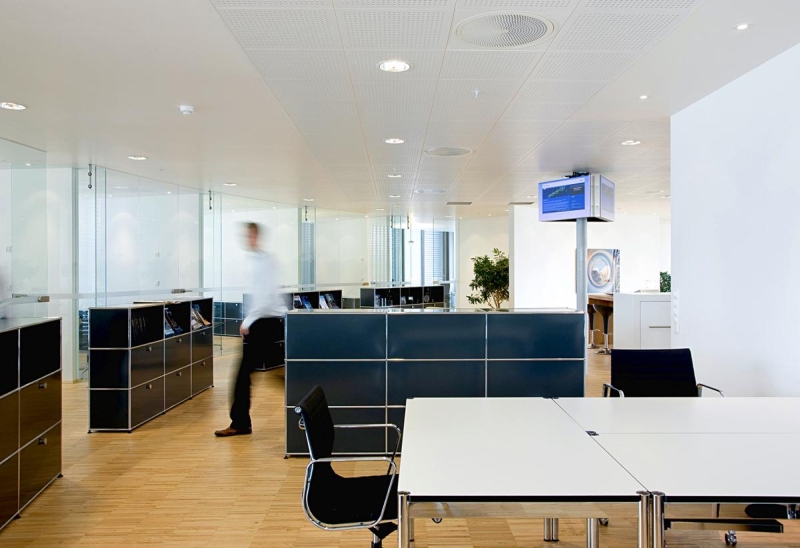Tidy Desk vs. Untidy Desk. Or, Thank You Prof. Vohs!
Among the more memorable moments in our long, if troublesome, tenure at and of (smow)blog is the day we took possession of our new 1m x 2m USM Haller table.
Less on account of the object and more on account of the looks of fear and trepidation that crossed the faces of those forced to share an office space with us.
“Given the chaos created on their Eiermann Table“, their pained expressions screamed, “what will they achieve with 2 sqm of finest Swiss fabrication?”
The answer was as swift as it was explicit.
Within a day the pristine white surface had vanished under a mountain of notes, brochures, loose change, books, receipts, invoices, bent paper clips, train tickets and dirty crockery.
Just as Prof. Kathleen D. Vohs from the Carlson School of Management at the University of Minnesota would have, hopefully, predicted.
In the recently published, peer reviewed, paper “Physical Order Produces Healthy Choices, Generosity, and Conventionality, Whereas Disorder Produces Creativity”1. Prof. Vohs and her colleagues explore the relationship between the level of workspace chaos and a series of behavioural attributes, and discovered that, “Disorderly environments seem to inspire breaking free of tradition, which can produce fresh insights. Orderly environments, in contrast, encourage convention and playing it safe.”
And that “…orderliness seemed to encourage a general mind-set for conservatism and tradition, and disorder had the effect of stimulating the desire for the unknown.”
Or, put another way: Chaos promotes creativity. Order stifles.
A phenomenon which can also be witnessed, less scientifically but more entertainingly, at http://famousworkspaces.tumblr.com
We can particularly recommend Steve Jobs circa 2004, Mark Zuckerberg – even if we don’t believe for a minute that he really works under such conditions – and Albert Einstein, whose desk leads us to surmise that e=mc2 can also be understood as “creative output= volume of paper on your desk x speed of light squared”
Quite aside from the quiet satisfaction we understandably take from the paper, there are a couple of interesting point raised by the research.
The first is, do we now have recourse to sue all those librarians who have so obviously hindered our development over the decades with their dogma of orderliness?
Secondly, what does that mean for those who work, creatively, from a small home office, yet occasionally want to invite friends and family to their home. Must one tidy up? Should one tidy up? Should one take pride in displaying, like some especially vain peacock, ones creativity? Or should one rather invest in an object such as International Marianne Brandt Contest 2013 Public Award winning 2tables by Anna Albertine Baronius, the ever wonderful Heimlicht by Leoni Werle or, for the only mildly creative, Sphere Desk by Hella Jongerius through Vitra. So desks which allow one to quickly and easily hide the chaos.
Thirdly can we now, by extrapolation, understand the harm of urban gentrification in a new light. It is potentially not just that affordable living and work space becomes rarer through gentrification, but environments vanish that genuinely nurture and support creativity. Thus making our cities culturally poorer. Similarly street art can be seen as not only creative in its own right, but as encouraging creativity.
And finally, as tablets and similar forms of mobile technology become increasingly important in ever more people’s every day reality, how should Prof Vohs’ research be understood in conjunction with research showing that most ipad usage is in relatively disorderly locations – in bed, at the kitchen table, on a sofa. Do we make different decisions when using our tablets and smartphones in such locations compared to when using them in more “conservative locations? Are we, for example, less generous when we write a restaurant review in a disorganised location than in an organised? Or in terms of, for example, online shopping, do we take more “risks” when shopping on a mobile device, are we more receptive to new ideas, do we shop less conventionally online than we would in a neat, tidy store with a neat, tidy sales person?
But perhaps the most important take home message from Prof. Vohs’ truly excellent research is reserved for all suffering under the burden of a tidy desk, an orderly work environment.
There is hope.
Just mess your desk up a little.
If anyone needs any tips or advice, just get in touch……..
1. Kathleen D. Vohs, Joseph P. Redden, and Ryan Rahinel 2013. “Physical Order Produces Healthy Choices, Generosity, and Conventionality, Whereas Disorder Produces Creativity” Psychological Science 24(9) 1860– 1867
Tagged with: Eiermann Table, Office, Office Furniture, USM Haller, usm table
